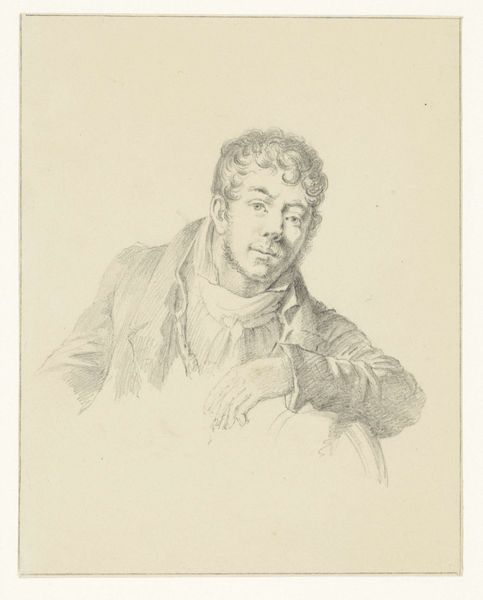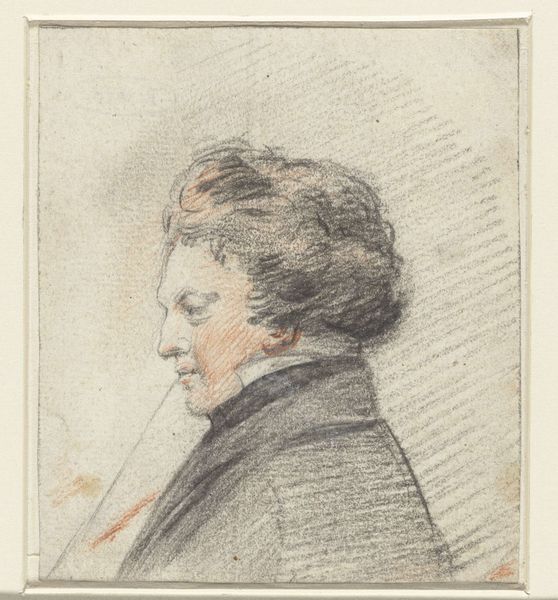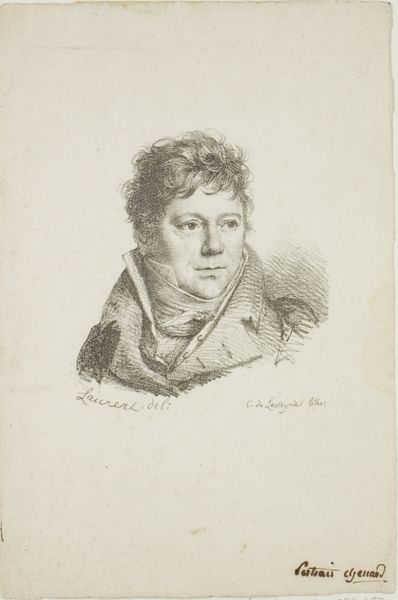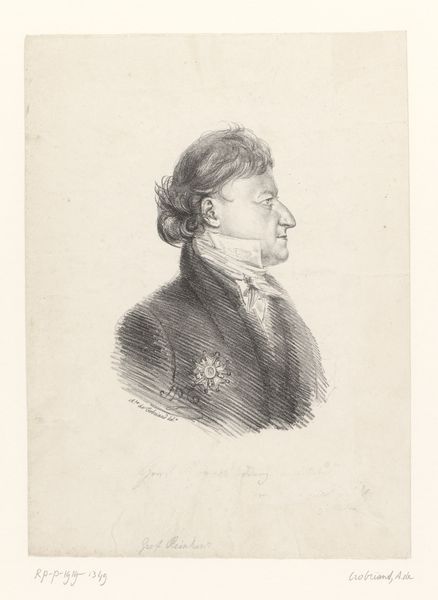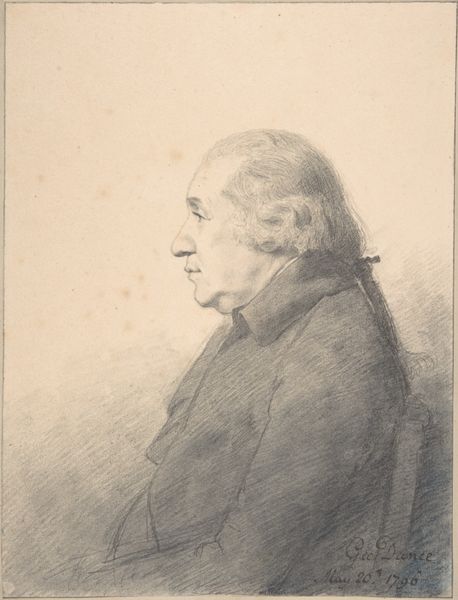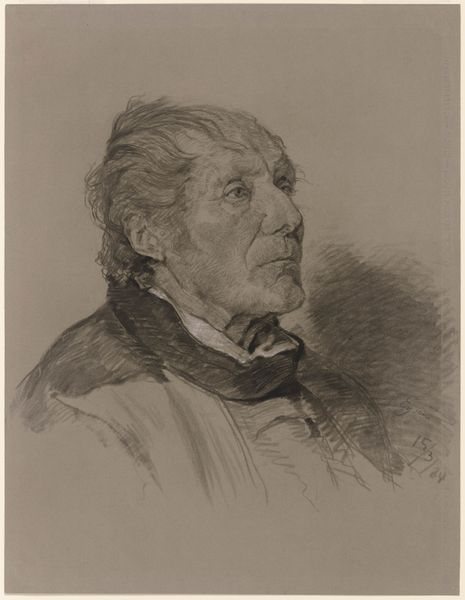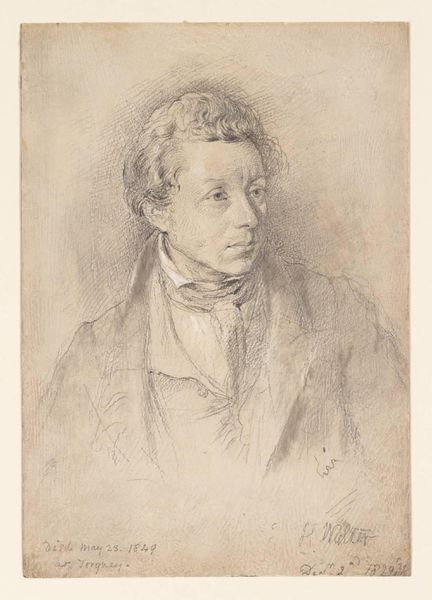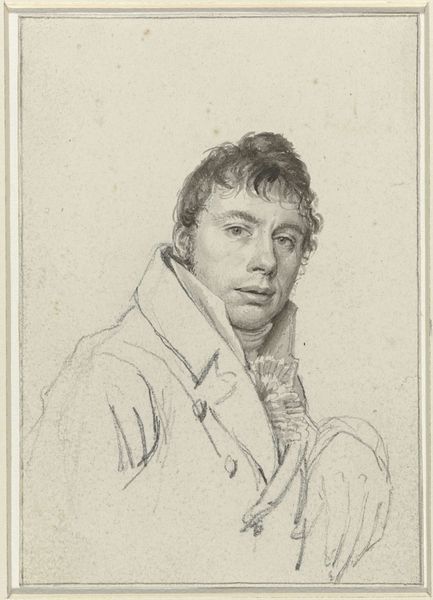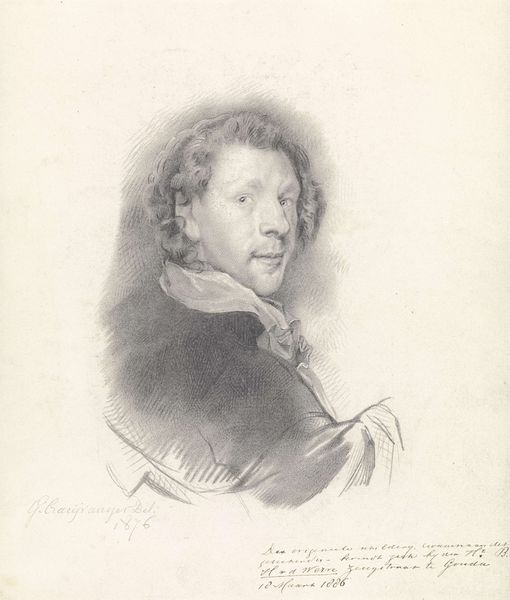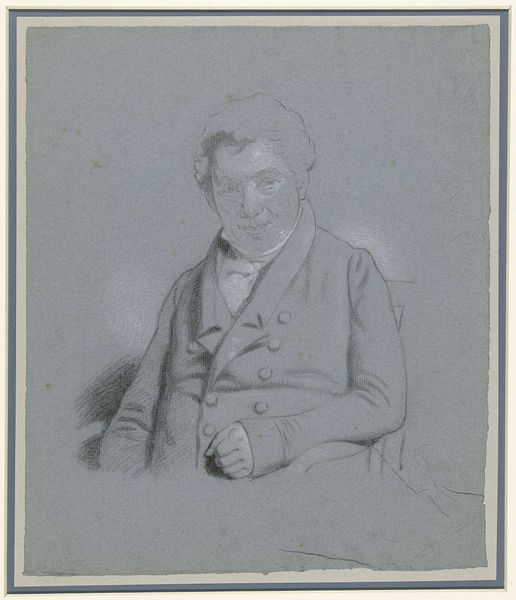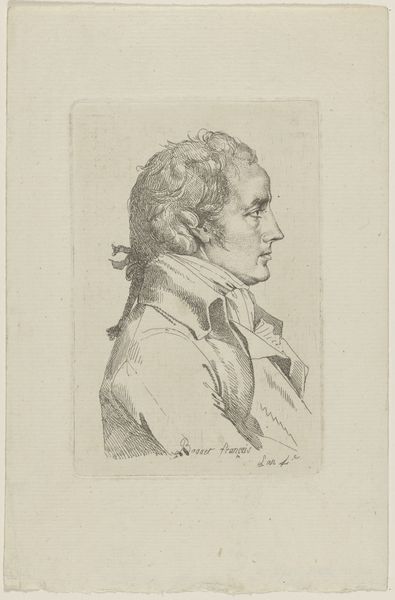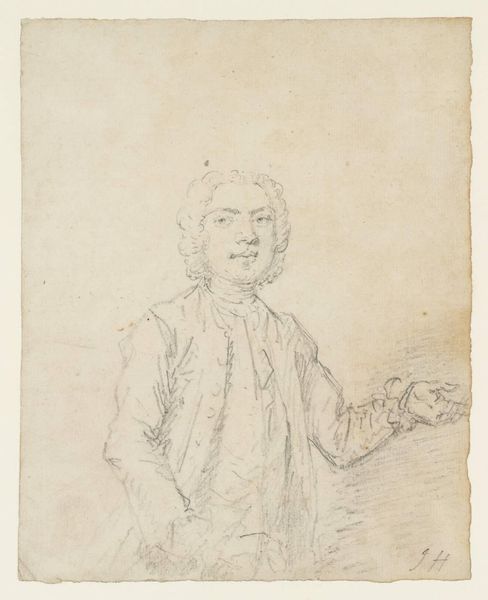
drawing, paper, graphite
#
portrait
#
drawing
#
neoclacissism
#
paper
#
pencil drawing
#
romanticism
#
graphite
#
portrait drawing
#
academic-art
#
portrait art
Dimensions: 242 × 186 mm
Copyright: Public Domain
Curator: I find myself strangely moved by this unassuming portrait of Pierre Alexandre Tardieu, created around 1825 by Jean Auguste Dominique Ingres. It's simply graphite on paper, but... Editor: Its humility strikes me first. It isn't striving for pomp or spectacle. It’s the work of capturing a craftsman. He seems comfortable. Curator: Tardieu was, in fact, a renowned engraver, which makes this image especially poignant. Ingres's lines are so clean and precise. He renders the textures of Tardieu’s jacket and the softness of his hair with exquisite detail. Do you notice that careful interplay between light and shadow that brings out the subtle volume of his features? It feels alive, somehow. Editor: And consider the production itself. Graphite wasn’t some highfalutin pigment. It was easily accessible, cheap even. An engraver depicting an engraver…I can’t help but think about the labor that went into both the creation and reproduction of images during this time. The paper, likely handmade… all those tiny decisions to arrive here at this place, a portrait in graphite. Curator: Yes, a direct connection there. The very *essence* of craft captured by a fellow craftsman! Ingres elevates his subject with subtle romanticism, highlighting not just his likeness but a certain inner warmth and intelligence. Editor: I appreciate your pointing that out! But beyond any romantic impulse, let's look at this from Tardieu's point of view. As a person memorialized through these materials, and someone whose livelihood depended on reproducibility... what might that mean for a person to think of his or her portrait hanging in a museum, or being displayed for everyone to see today? It's not quite about a certain inner warmth, I think. It’s the materiality that endures. Curator: An interesting and pragmatic point. Thinking about Ingres choosing this accessible medium to immortalize Tardieu makes me consider accessibility itself— how easily drawings could circulate, how attainable art could be. Editor: Yes, it brings up interesting considerations around how value is created, reproduced and ultimately circulated in the world. Curator: Seeing Tardieu immortalized like this—so plainly yet beautifully rendered—adds a new, tender dimension to that. It makes me think more broadly about the dignity of labor, the legacy of art and craft and also the quiet poetry of two hands at work creating something… eternal. Editor: Agreed!
Comments
No comments
Be the first to comment and join the conversation on the ultimate creative platform.
